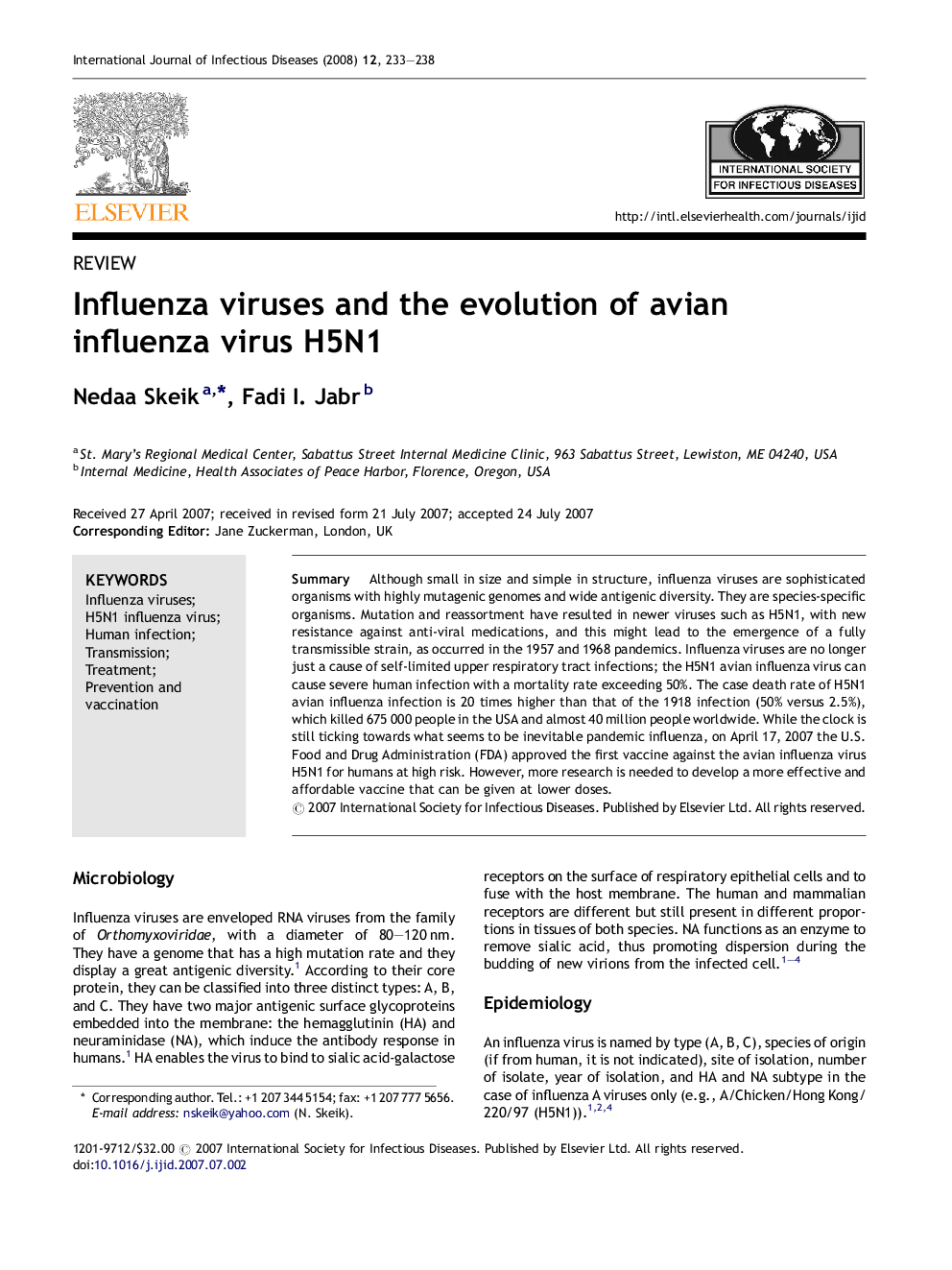| Article ID | Journal | Published Year | Pages | File Type |
|---|---|---|---|---|
| 3364718 | International Journal of Infectious Diseases | 2008 | 6 Pages |
SummaryAlthough small in size and simple in structure, influenza viruses are sophisticated organisms with highly mutagenic genomes and wide antigenic diversity. They are species-specific organisms. Mutation and reassortment have resulted in newer viruses such as H5N1, with new resistance against anti-viral medications, and this might lead to the emergence of a fully transmissible strain, as occurred in the 1957 and 1968 pandemics. Influenza viruses are no longer just a cause of self-limited upper respiratory tract infections; the H5N1 avian influenza virus can cause severe human infection with a mortality rate exceeding 50%. The case death rate of H5N1 avian influenza infection is 20 times higher than that of the 1918 infection (50% versus 2.5%), which killed 675 000 people in the USA and almost 40 million people worldwide. While the clock is still ticking towards what seems to be inevitable pandemic influenza, on April 17, 2007 the U.S. Food and Drug Administration (FDA) approved the first vaccine against the avian influenza virus H5N1 for humans at high risk. However, more research is needed to develop a more effective and affordable vaccine that can be given at lower doses.
